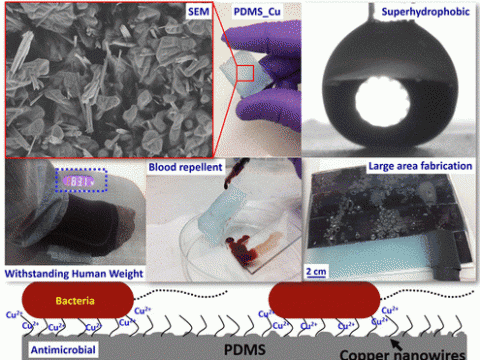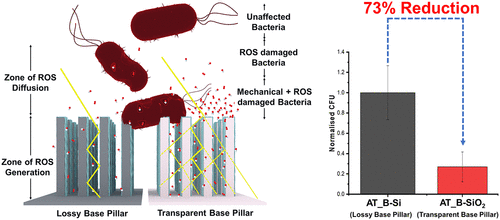
Antimicrobial-resistant infections currently claim 700,000 lives each year from across the world and this figure will increase alarmingly to 10 million by 2050 if it is not stopped. One of the methods to tackle biofilms involves prevention of biofilm formation by actively killing the bacteria as soon as they arrive on the surface. Use of antibiotic (chemically) coated surfaces has a significant concern, as widespread antibiotic usage has been linked to the emergence of several multi-drug resistant strains of infectious diseases, some of which (e.g. Tuberculosis) may become epidemic. Consequently, instead of killing bacteria chemically, Prof. Sen’s group explores alternative physical methods for contact killing of bacteria. In this study, nano-structured surfaces are used to kill bacteria landing on the surface. Development of low-cost mechanically robust surfaces for practical applications has been studied. The group also investigates techniques to coat active material on the nanostructures to enhance killing efficiency. Further, the researchers are also interested in experimental studies focusing on understanding the fundamentals of the contact killing mechanism.

The paper “J. Singh, S. Jadhav, S. Avasthi and P. Sen. Designing Photocatalytic Nanostructured Antibacterial Surfaces: Why is Black Silica Better Than Black Silicon?", ACS Applied Materials and Interfaces, (2020). can be accessed here: https://pubs.acs.org/doi/abs/10.1021/acsami.0c02854.
Image Credit: http://www.cense.iisc.ac.in/mflab/?research_area=antimicrobial-surfaces.
